1.2: Lab 2 - Map Interpretation
- Page ID
- 25326
This lab contains potentially inaccessible interactive resources. Please work with your instructor and local campus resources to identify accommodations for these resources.
- Describe how map projections transform the Earth’s three-dimensional surface into a two-dimensional map.
- Explain why all maps have distortion.
- Use different map scales.
- Create a topographic profile.
- Interpret topographic maps.
- Explain basic land surveying techniques.
- Use map analysis tools in Google Earth Pro.
Introduction
Cartography is the science of map-making. Combining technical information, design, and aesthetics, cartography builds on the premise that reality can be modeled in ways that communicate spatial information effectively.
The cartographic design provides the interpreter, the map reader, a way to observe:
➢ what information must be included, and what can be left out. Including all data on a single map is impossible, so an incredible amount of power is given to the cartographer as they decide what information or elements are most important to a population.
➢ the physical geography landscape in single and multiple dimensional formats. Understanding what we stand facing in a physical environment can be interpreted in a map.
➢ a cultural understanding of a location's geography. Selected traits such as population density or political boundaries may be mapped.
➢ the organization and display of map elements to best convey the data presented to the reader. This is the main concern of design.
Understanding the elements within a map allows the reader to understand the environment without having to visit the location. Being proficient with map interpretations empowers you to be able to observe a random topographic map and identify distances, locations, and physical features. In this lab, you will explore a variety of ways to interpret the Earth’s topography, by way of projections, cartography, topographic map reading, and digital mapping.
One way to view cartography is with a topographic map. Topographic maps provide the geographic locations and elevation of a landscape by using contour lines, shaded relief, colors, and in some cases, digital elevation models (DEM).
Part A. Map Projections
The term map projection refers to both the process and product of transforming spatial coordinates on a three-dimensional sphere to a two-dimensional plane. In simpler terms, how do cartographers take a round object such as Earth and make it into a small flat paper map? Well, if you had a clear globe the size of a beach ball and placed a light inside this globe, it would cast shadows onto a surrounding surface. If this surface were a piece of paper that you wrapped around the globe, you could carefully trace these shadows onto the paper, then flatten out this piece of paper and have your projection![1] Note that the areas tangent to the paper and globe represent a point or line of tangency, as the tracing will be of an exact replica with no distortion. Locations farther away from these points or lines of tangency will experience greater distortion.
Most projections transform part of the globe to one of three “developable” surfaces, so-called because they are flat or can be made flat: plane, cone, and cylinder (Figure 2.1). The resulting projections are called planar, conic, and cylindrical, respectively. We use developable surfaces because they eliminate tearing, although they will produce shearing and compression. Also, note that planar projections are sometimes called azimuthal projections.18
Planar projections are created using the idea of a contact point, or point of tangency, that becomes a singular focus in the projection. This is done using a central longitude and latitude, or a place or landmass.
Conic projections are created using a line of latitude as a contact line or line of tangency. This is often observed as a cone wrapped around the globe and the tangency is observed laterally as a small circle.
Lastly, cylindrical projections are created using the idea of the Equator as the contact line or line of tangency. This is observed as a paper wrapped along the Equator, and areas farther north or south of the equator become distorted.
Tearing is the term to describe when a projection places an edge on the map, or a discontinuity. Since all maps have an edge, different levels of tearing can be observed. Shearing is a term to describe the changes in the shape of a map feature, due to distortion, without changing the area. Lastly, compression is the term that is used to describe the enlarging or shrinking of landforms and features. Compression can often mislead the map interpreter, because size is frequently used as a measurement of power; this is often referred to as the “power of representation and representation of power”. This means that those who decide how to make a map have the power to represent the world in a certain way and thereby their power is represented on the map.

 Check It Out! Why All World Maps are Wrong
Check It Out! Why All World Maps are Wrong
Ever wonder what it would look like if you took one of the beachball globes and tried to make a flat map out of it? We know it's not possible, but here is a great video showing why it's not possible! (Video length is 6:00).
Map Distortion and Social Injustice?
So what else can maps tell us about the world? Maps can illustrate how critical infrastructure is selectively parceled out from neighborhood to neighborhood. They can represent political bias by altering the shapes, sizes, and colors of regions, or by misleading an audience with altered or false information.
One of the main factors to consider is map distortion. All maps have distortion because it is impossible to transform the three-dimensional Earth onto a flat surface without causing errors. There are four primary types of distortion: area, shape, distance, and direction. Each of the projections found in Figure 2.1 (shown above) creates distortion on the globe. The job of the cartographer is to decide what distortion is appropriate according to the purpose of the map.
- Of the three projections shown in Figure 2.1 (shown above), which would be best for making a map along a:
- Great circle, say the equator? Explain your response in one sentence.
- Small circle, say the tropic of cancer? Explain your response in one sentence.
- Map of a continent, say Antarctica? Explain your response in one sentence.
- Refer to Figure 2.2.
- What are your very first observations of this map?
- Take a closer look at the map. What do you observe?

Figure 2.2 is an example of a cartographic fallacy. This occurs when the map is not representative of reality—a map with a fallacy also has an intentional or accidental lie. Cartographers often use fallacies on maps of public transportation systems. In order to fit all of the station labels on the map, the cartographer misrepresents the distances between them.
A danger with map projections is that the map may enlarge certain countries, which can make them seem powerful and intimidating. This concept is not new—it is known as the “power of representation and representation of power”. As an example of this, observe the map below of Africa, and take note of the landmasses that have been put inside the continent of Africa (Figure 2.3).
- Refer to Figure 2.3. Interpret the map, then write down some of the things you noticed, things you found interesting, or things that might confuse you.
- Refer back to Figure 2.1.
- Does the size of Africa appear distorted in any of the projections? If yes, in which projections? Tip: compare Africa and Greenland in each projection.
- Does the shape of Africa appear distorted in any of the projections? If yes, in which projections? Tip: use a globe, which best represents the shape of continents, to compare the map projections in Figure 2.1.

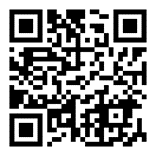 Check It Out! Compare the Real Sizes of Countries
Check It Out! Compare the Real Sizes of Countries
The surface of the Earth is always distorted in some way when it is projected onto a map surface. Compression is a common form of distortion where sizes are distorted. Have you ever wondered what the true size of California was in relation to the United Kingdom, or Iceland, or another place? Check out The True Size Of website to see the comparisons.
Part B. Map Elements
It is very important to be able to learn to interpret map elements. It is not always possible to see the area being studied in person. Understanding these elements allows the map reader to visualize size, topography, and other elements found within the environment. This portion of the lab will provide better examples of some elements often used, such as map scale, contour lines, and relief features. Later in this lab, you will learn more about items found within the collar of a map (this is along the perimeter, or edges, of a map) such as the legend, orientation, geodetic data, and many more items.
Map Scale
The Earth’s surface has an area of over 500 million square kilometers (approximately 193 million square miles) and any picture or map of the Earth that you can easily carry can only show general outlines of continents and countries. When we visually represent a region of the world on a map, we must reduce its size to fit within the boundaries of the map. Map scale measures how much the features of the world are reduced to fit on a map; or more precisely, map scale shows the proportion of a given distance on a map to the corresponding distance on the ground in the real world.[22] The map scale can be represented by a representative fraction (fractional), a verbal scale, or a graphic scale (Figure 2.4).
Fractional or Representative Fraction Scale
The most commonly used measure of map scale is the representative fraction (RF), where a map scale is shown as a ratio. With the numerator always set to 1, the denominator represents how much greater the distance is in the world. Figure 2.4 shows a map scale with an RF of 1:24000, which means that one unit on the map represents 24,000 units on the ground. The representative fraction is accurate regardless of which units are used; the RF can be measured as 1 centimeter to 24,000 centimeters, one inch to 24,000 inches, or any other unit. The key idea to remember is that the same unit has to be used on both sides of the representative fraction. So, if you say 1 inch for the left side, you have to follow that up with the appropriate number of inches on the right side. If you say 1 centimeter for the left side, you have to follow that up with the appropriate number of centimeters on the right side.6
Verbal Scale
Some maps, especially older ones, use a verbal description of scale. For example, it is common to see “one centimeter represents one kilometer” or something similar written on a map to give map users an idea of the scale of the map.6
Graphic Scale
Scale bars are graphical representations of distance on a map. One important advantage of graphic scales is that they remain true when maps are shrunk or magnified.6

- Now that you understand the basics of map scales, write in the missing scales in Figure 2.5. Note that American units are shown for the top table and metric units are shown on the bottom table. Each row has one map scale provided. Complete the row using the equivalent information for the missing scale. For example, in the top row, write what 1:100000 would be as a verbal scale in American units. For the final row shown for both the American and metric unit tables, provide an additional example. Tip: there are 63,360 inches in one mile and 100,000 centimeters in one kilometer.

Distance Conversions
The United States, Liberia, and Myanmar are the only three countries that have not adopted the metric system as its primary system of measurement. There have been reports and legislation calling for a conversion to the metric system since the 1960s. The U.S. Department of Commerce’s National Institute of Standards and Technology wrote that “industrial and commercial productivity, mathematics and science education, and the competitiveness of American products and services in world markets, will be enhanced by completing the change to the metric system of units” (1997, 2). From a student’s perspective, it would be better if the U.S. converted to the metric system. Because scientists globally use the metric system, most of U.S. scientists do, as well. Until the U.S. “metrifies”, students in the United States will need to continue to use and understand both measurement systems.
- Refer to Appendix 2.1. Show your calculations for the following questions.
- 2 miles contain how many feet?
- 1 mile contains how many inches?
- 10 kilometers contain how many meters?
- 1 kilometer contains how many centimeters?
- How many miles are in a “5k” (five-kilometer) race?
- A marathon is 26.2 miles. How many kilometers is this?
Contour Lines
When observing a topographic map, the first thing observed is the contour lines. Contour lines are continuous lines on a map that join points of equal elevation, meaning that the elevation is constant along the line. Another important element to know is that contours will never cross, or overlap, as they must always remain the same value. Contour lines are especially helpful when interpreting the topography, or the physical shape of the landforms on the map. The spacing between the lines provide the map reader with hints about the slope of the surface.
Here's an easy way to understand how to interpret contour lines: take an object like a three-layered cake (Figure 2.6). The thickness of each layer is the same, creating its own elevation boundaries or contour lines.

- Refer to Figure 2.6.
- Observing the cake, what do you notice about each of the three layers? Do they cross or mix, or are they parallel to one another? Is the cake symmetrical or is it asymmetrical?
- Assume that each layer of cake has a height of 6” (six inches) and that the bottom of the cake is at 0” (zero inches).
- Label each line shown on the right side of Figure 2.6 with its height.
- What is the total relief of the cake? Hint: how tall is the cake?
- Now imagine that this cake was a hill. Which side of the hill has a steeper gradient? How do you know? (Hint: observe the contour lines or the perimeter of the circles).
Topographic maps show lines for selected elevations, otherwise the map would be too confusing to read. The elevation difference between contour lines is called the contour interval. If a topographic map has a 10-foot contour interval, that means that each line represents a 10-foot elevation difference between them. Whether the contour interval is a 5-foot, 10-foot, or 100-foot interval depends on the local topography.
- Refer to the contour lines that you labeled on the right side of Figure 2.6. What is the contour interval of this “map”?
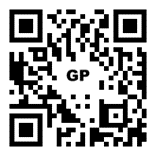 Guided Practice: Drawing Isolines
Guided Practice: Drawing Isolines
Isolines are lines on a map that connect equal values. Contour lines are an example of an isoline—contour lines connect points of equal elevation. You may encounter other types of isolines in this physical geography lab course: isobars are lines that connect points of equal atmospheric pressure and isotherms are lines that connect points of equal temperature. By “connecting the dots” in the activity below, you will learn how to extrapolate the data that is displayed on the map to draw contour lines. See an example of how to draw isolines in this video, Drawing Contour & Isolines, by Professor Jeremy Patrich. (Video length is 6:01).
Connect the Dots Activity
Remember, contour lines are elevation lines that are constant. They will never cross, change, or disappear. A great way to learn the rules of contour lines is by connecting the dots.
- Below you will find an image that consists only of elevation points, and you will need to connect the dots (Figure 2.7). This can be challenging, as these elevation points are even, odd and everything in between, so you will have to interpret the data. Sometimes you will have to figure out where a specific number belongs that you can not find. As an example, contour lines for 45’ and 40’ have been drawn for you. Note how each of these contours never crosses, and always maintains their value (Hint: you will observe a set of 10’ contours that run southwest to northeast, that is a river). Complete the following contour lines: 35’, 30’, 25’, 20’, 15’, and 10’.

- What is the contour interval for Figure 2.7?
Relief Features
Relief features are influenced by the drainage of the area. Running water works upon the surface of the ground, eroding and transporting the softer material and leaving the terrain with characteristic valley and ridge patterns. The map below is of Three Rivers Mountain (Figure 2.8).
- Observing the patterns on the map (Figure 2.8), you see that there are three areas on the map where all the contours make a ‘V’ shape. When contours take this shape, the tip of the ‘V’ points upstream. Use a blue colored pencil to draw in each of the three rivers, and include arrows showing which way the water is flowing.
- On the top of the mountain, draw a smaller contour line using a brown pencil, to replicate the bottom of a lake. We know the lake must be deeper than the 180’ contour, so along the 180’ contour line, add brown hachures, or tic marks that are perpendicular from the 180’ towards the new contour drawn. These marks allow the map reader to know that the elevation is changing. Refer to Figure 2.9 for an example of a contour line with hachures.
- After completing the hachures, what would be the elevation of the new contour line that you drew?


Topographic Profiles
A common way to understand what topographic maps represent is to construct a topographic profile. A topographic profile is a cross-sectional view along a line drawn through a portion of a topographic map. In other words, if you could slice through a portion of a cake, pull away one half, and look at it from the side, the surface on the side would be a topographic profile. On a larger scale, imagine that you and a friend are going on a large hike, you could draw a topographic profile of the hike before completing it to better understand the terrain (gradient, length, elevation, etc.).
- A topographic profile appears If you select the cycling option on Google maps.
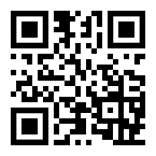 Go to Google maps.
Go to Google maps.- Click the Directions icon (it is blue with an arrow).
- Click on the cycling icon (the person on a bike).
- Type your address as the starting point.
- Type your college as the destination.
- Click DETAILS.
- Sketch the topographic profile of a bike ride from your address to your college in the space below. Label the lowest and highest elevations shown.
Before completing a topographic profile, you must first identify a line of interest between two or more points. This is called a transect. An example of a transect could be the length of a hiking trail, the distance between mountain peaks or valleys, or the distance between your home and college. The objective is to better understand the region's topographic relief, which is the difference between the highest and lowest elevation observed along the line. After you have identified where you want to draw your profile, use the following steps to construct your profile (be sure to review Figure 2.10 that illustrates the steps).
- Refer to your topographic profile sketch from the previous question. What is the relief between your address and your college?
Step 1
Refer to Figure 2.11. The transect is the dashed line. This represents the line of interest.
Step 2
Place a blank piece of paper along the transect line (index cards work great). Make sure you align the left corner to the end of the transect you drew.
Step 3
Make a small mark where the index card intersects the contour line on the map and the index card, as seen in Figure 2.10. Then, write the corresponding elevations from the map contours onto your index card.

- Below you will find a topographic map and a dashed line of interest (Figure 2.11). Follow the steps to collect the data needed to draw a topographic profile. Once you are finished, you will align your paper on the graph below. Plot your elevation points and then connect them with a line.

Now that you have completed your topographic profile, below you will find a few more questions regarding your observations from the above map.
- What is the highest elevation possible on this map?
- What is the lowest possible elevation on this map?
- Locate the letter A on the map. What is the elevation?
- Locate the letter B on the map. What is the elevation?
 Think About It...Gradient
Think About It...Gradient
Remember that gradient is the observed slope. Refer to Figure 2.11; which side has the greatest slope? The left side does, and we can see that in the topographic profile you created, but it can also be seen by looking at the contour lines. Note how close they are to each other on the left side of the map. The closer the contours are to each other, the steeper the slope!
Part C. Topographic Maps
Using the previously learned information, you will now be able to observe and interpret basic information on a topographic map. This activity will reintroduce some content from your first lab when you learned about the geographic grid system and the Public Land Survey. Topographic maps have an incredible amount of information both on the map itself and around the perimeter of the map, known as the map collar.
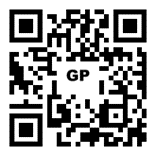 Guided Practice: Introduction to Topographic Maps
Guided Practice: Introduction to Topographic Maps
Watch this video, Read & Interpret Contour Lines & Topographic Maps, by Professor Jeremy Patrich for a quick introduction to the key features of topographic maps and tips on how to interpret topographic maps. (Video length is 9:41).
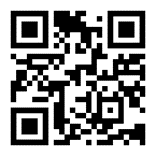 Check It Out! Topographic Map Symbols
Check It Out! Topographic Map Symbols
The U.S. Geological Survey has a guide of topographic map symbols. This guide will help you to interpret topographic maps. (The link goes to a pdf file to download).
Step 1. Reading the Map Collar
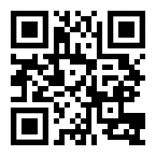 Your instructor may provide hard-copy topographic maps for the following steps, or you may download one from the U.S. Geological Survey’s National map webpage. Select Map Indices - All in the “Show Map Index” toggle menu on the upper right-hand side of the map. You can zoom in on an area until you see the topographic map names and boundaries, both shown in green. Click the US Topo check box underneath the Advanced Search heading on the left-hand side of the webpage. Then click on the blue Search Products button. In the US Topo row, click on results. Then click Download next to the topographic map you would like. Note: these are large map files that may take a few moments to download and view.
Your instructor may provide hard-copy topographic maps for the following steps, or you may download one from the U.S. Geological Survey’s National map webpage. Select Map Indices - All in the “Show Map Index” toggle menu on the upper right-hand side of the map. You can zoom in on an area until you see the topographic map names and boundaries, both shown in green. Click the US Topo check box underneath the Advanced Search heading on the left-hand side of the webpage. Then click on the blue Search Products button. In the US Topo row, click on results. Then click Download next to the topographic map you would like. Note: these are large map files that may take a few moments to download and view.
- Each topographic map, or quadrangle, is assigned a name. The name of the map is usually found in the upper-right corner in large print. What is the name of your map?
- Locate the scale bar on the bottom of the map. What is the fractional scale for this map?
- What is the contour interval of this map? Tip: this is often shown below the scale bar.
- Most quadrangles have a small reference map, usually the shape of the state in which this map is found. There you can find a little box that represents the location of this specific map within the state. What is that general location?
- Near the bottom left corner, you will find some additional data, such as projection type and when it was made. What projection was used for this map?
- Often maps will tell you when it was originally surveyed, plane table checked, or updated. What are some of those years?
- The magnetic North Pole (MN) is not the same as the geographic North Pole (GN). So, a compass doesn’t point exactly toward the geographic north. Magnetic declination is the angular difference between true north and magnetic north for a given location and time. What is the magnetic declination for this map?
- Moving around the map, you will find the names of the maps that adjoin the edges, these are often found in a smaller italicized print along the edge or in a smaller boxed diagram in the lower-right corner. What map adjoins in each of the following corners?
- Western Edge:
- Northeastern Edge:
Step 2. Reading the Map
- The following questions reference the Public Land Survey.
- List all the townships represented on this map.
- List all the ranges represented on this map.
- What are the section, townships, and ranges for the following locations:
- The center of the map.
- The extreme northeast corner of the map.
- The following questions reference the contour lines of the map.
- After observing the map, briefly describe the overall topography of the map. What are some features or details you find interesting, and what helped you decide what the topography looks like? (Hint: Is the topography mountainous, or flat? Do you notice water features, etc? Don’t forget to include what helped you interpret your findings).
- What is the highest elevation found on the map? (Hint: this is usually found by following the contour lines to the top of a mountain, then the highest point is usually marked with a symbol, like a box or a triangle).
- What is the lowest elevation found on this map?
- What is the total relief (the difference between the highest and lowest points) of this map?
- The following questions reference latitude and longitude.
- Locate the latitudes for this map. Remember that latitudes are the horizontal lines on the map.
- Northern latitude:
- Southern latitude:
- Total minutes of latitude covered in this map (this is the difference between the northern and southern latitude):
- Locate the longitudes for this map. Remember that longitudes are the vertical lines on the map.
- Western longitude:
- Eastern longitude:
- Total minutes of longitude covered in this map (this is the difference between the western and eastern longitude):
- What is the minute series of this map? Hint: how many minutes of latitude and longitude are shown across the top and side of the map?
- Use Your Critical Thinking Skills: What is the shape of this map? Why is it not a perfect square? Explain your response in one to two sentences.
Part D. Surveying Activity
Land surveying is the art and science of mapping and measuring the landscape. Although the details are very specific, the production of mapping space is relatively easy. Throughout this lab you have learned how to observe and interpret data on maps. In this activity, you will learn the basics of survey data collection and how to take the data and put it on a map.
The first step of surveying is knowing the language, as there are a lot of acronyms in this field (Figure 2.12):
➢ Backsight (BS): A backsight is a point of known elevation and location, or latitude and longitude. This is often observed as a benchmark, or a little brass marker found on the ground.
➢ Foresight (FS): A foresight is a location with no known elevation or location. Think of this as looking forward to the unknown.
➢ Height of the Instrument (HI): There are many different types of survey equipment, but the most common is called an Auto Level. Once the instrument is leveled onto a tripod, the height of this instrument in relation to sea level, 0 feet, must be calculated. This is done by the use of a measuring rod or ruler and a benchmark (BM). The HI is solved by adding the benchmark and the vertical distance read on the measuring rod, above the benchmark. Here is a helpful explanation: Think of your face as the instrument; now, how can you measure the height of your eyes by using the height of known objects around you? Let's say that you observe a 3-foot desk in front of you, and you place a large ruler perpendicular to the desktop. If the 2-foot measurement is at your eye level, then you can assume your eyes are a total of 5 feet from above the ground.
➢ Elevation: This is the number you are ultimately trying to find out; what is the elevation for your foresight, or the elevation of an unknown location? This is calculated by using your height of the instrument and subtracting the new reading on a measuring rod, or ruler. Remember, you are trying to solve the elevation of the ground in relation to you.
➢ Bearing: Auto levels can only swivel left and right, with a bearing of 360°, as it doesn't move vertically, up or down.
- Write the name of each label (BS, BM, HI, FS) onto Figure 2.12. For example, next to BS write backsight.

Below you will find an image portraying what it would look like if you looked through the scope of an auto-level (Figure 2.13). Note the three horizontal lines; these are how we obtain our measurements. As you view through the scope, you are viewing the measuring rod, which is a really long ruler. The farther the rod is from the level, the larger the numerical distance between the three lines seen in the scope. In fact, if you subtract the difference between the top and bottom stadia (stadia A and B) and then multiply it by 100, you will calculate the rough distance between the level and the rod. (Hint: another way to think of this is to put your right hand in front of your face, with your three middle fingers in a horizontal position. Look around the room, the farther you are from the objects, the more of the object you can see).

It has been mentioned before, but remember that the farther the survey rod is from the instrument, the farther the distance between the numbers and the stadia (this is essentially called vertical distance).
- Refer to Figure 2.14. Which image would better represent a measuring rod that is farther from the device, and why?

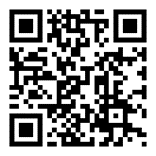 Check It Out! Using An Auto Level in the Field
Check It Out! Using An Auto Level in the Field
This portion of the lab might have you wondering what all this looks like in the field, so check out a video from the Illinois Surveyors Association, where they teach you about the device! (Video length is 7:54).
- It is now time to collect some data. Figure 2.15 shows incomplete survey data. The first row, the Reference, has been completed for you. As you can see in the backsight information, the height of the instrument and distances are solved; these values will remain the same for this activity, as we are not moving the instrument. Please complete the missing distances and elevation values for Stations 1 through 4.
| Station | Backsight | HI Height of Instrument | Foresight | Distance | Elevation | Bearing | Remarks |
|---|---|---|---|---|---|---|---|
|
Reference |
A: 5.66 | HI= BM+BS |
(A-B)x100 68m |
12° |
BM=100m |
||
| 5.32 | HI=100+5.32 | ||||||
| B: 4.98 | 105.32 | ||||||
|
1 |
A: 3.025 |
(HI - FS) 102.395 |
99° |
||||
| FS: 2.925 | |||||||
| B: 2.825 | |||||||
|
2 |
A: 3.16 |
132° |
|||||
| FS: 3.05 | |||||||
| B: 2.94 | |||||||
|
3 |
A: 3.982 |
107° |
|||||
| FS: 3.757 | |||||||
| B:3.532 | |||||||
|
4 |
A: 2.65 |
107° |
|||||
| FS: 2.2 | |||||||
| B: 1.75 |
- The next step is to take these datasets and to create a topographic map. What you completed above is only four stations, and most topographic maps will have tens of thousands! That being said, use the completed data set (Figure 2.16), a printable ruler and protractor (Figure 2.17), and a blank map (Figure 2.18) to plot your data. Be sure to follow the instructions carefully; once you are done, you will have created your very own topographic map with a well-defined contour line!
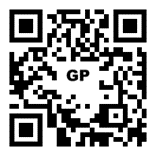 Guided Practice: Making a Contour Map from Surveying
Guided Practice: Making a Contour Map from Surveying
Looking for guidance on how to create a contour map from surveying data? Check out the steps to create your map in this video, Drawing Contour Lines on a Map, by Professor Jeremy Patrich. (Video length is 3:58).



Part E. Google Earth Pro Activity
For this activity, you will need to download GoogleEarth Pro program onto a desktop or laptop (tablets or phones will not be able to access all the tools needed for this activity).
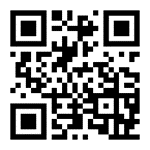 Check It Out! First Time Using Google Earth Pro?
Check It Out! First Time Using Google Earth Pro?
Is this your first time using Google Earth? Go to the keyboard shortcuts page to learn how to navigate in Google Earth Pro!
Step 1
Once you have opened Google Earth Pro, in the search box on the upper-left corner, type in Lake Piru. Once there, zoom in so the lake at least fits the full window of the program.
Step 2
Select the ‘“historical imagery” tool in the top toolbar; it looks like a clock with an arrow going counterclockwise. This will open up a slide bar showing all the historical imagery available for this region. Slide to December 2005.
Step 3
Now select the “add a path” tool; it looks like three boxes connected with a singular line. This tool will allow you to click and drop a linear path (if you make a mistake, the delete button erases the most recent plot). You can click spot by spot or click and drag along your desired path. You will now trace the perimeter of Lake Piru; be sure to title the path December 2005. Once you have traced the perimeter of the entire lake, select the “style, color” tab within the small popup window, pick your favorite color to represent this line, and select OK to save.
Step 4
Slide the “historical imagery” tool to the most recent imagery and repeat Step 3. Be sure to label the path with the date from the imagery (refer to Figure 2.19 for an example).

Step 5
You should see your completed paths in the Places column on the left-hand side of the program. If you right-click on your path, and select “Get info,” you will be able to access all the information from that path, including measurements. As an example, the measurement of the green line seen in Figure 2.19 (shown above) is 0.32 miles.
Step 6
Answer questions 35 through 37. Then, take a screenshot of both of your paths and submit the image with this lab.
- Using the measurement tools for both paths, what were the perimeters of Lake Piru in kilometers and miles...
- … in December 2005:
- … based on the most recent imagery:
- Based on your measurements, have the lake levels increased or decreased?
- Lake Piru is a human-made reservoir, constructed in 1955, and is only fed with rainwater and runoff from Piru Creek. Why do you think the lake levels have changed? (Hint: don’t forget to take the following into account: the season in which your data was collected, drought year, El Niño weather patterns, etc.).
- Submit a screenshot of both of your paths. (Your instructor will provide instructions on how to submit the screenshot).
Part F. Wrap-Up
Consult with your geography lab instructor to find out which of the following wrap-up questions you should complete. Attach additional pages to answer the questions as needed.
- What is the most important idea that you learned in this lab? In two to three sentences, explain the concept and why it is important to know.
- What was the most challenging part of this lab? In two to three sentences, explain why it was challenging. If nothing challenged you in the lab, write about what you think challenged your classmates.
- What is one question that you have about what you learned in this lab? Write your question along with one to two sentences explaining why you think your question is important to ask.
- Review the learning objectives on page 1 of this lab. How would you rate your understanding or ability for each learning objective? Write one sentence that addresses each learning objective.
- Sketch a concept map that includes the key ideas from this lab. Include at least five of the terms shown in bold-faced type.
- Create an advertisement to educate your peers on the important information that you learned in this lab. Include at least three key terms in your advertisement. The advertisement should be about half a page in size (about 4 inches by 6 inches).
- One way to think of physical geography is that it is the study of the relationships among variables that impact the Earth's surface. Select two variables discussed in this lab and describe how they are related.
- How does what you learned in this lab relate to your everyday life? In two to three sentences, explain a concept that you learned in this lab and how it relates to your day-to-day actions.
- How does what you learned in this lab relate to current events?
- Write the title, source, and date of a news item that relates to this lab.
- In two to three sentences, discuss how the news item relates to what you have learned in this lab.
- In one to two sentences, discuss whether or not the news item accurately represents the science that you learned. Tip: consider whether or not the news item includes the complexity of the topic.
- Search O*NET OnLine to find an occupation that is relevant to the topics presented in today's lab. Your lab instructor may provide you with possible keywords to type in the Occupation Quick Search field on the O*NET website.
- What is the name of the occupation that you found?
- Write two to three sentences that summarize the most important information that you learned about this occupation.
- What is one question that you would want to ask a person with this occupation?
Appendix 2.1: Distance Units of Measurement
Metric Standard Units
➢ 1 centimeter (cm) = 10 millimeters (mm)
➢ 1 meter (m) = 100 cm
➢ 1 kilometer (km) = 1,000 m
American Customary System Standard Units
➢ 1 foot (ft) = 12 inches (in)
➢ 1 yard (yd) = 3 ft
➢ 1 mile (mi) = 5,280 ft
Converting from Metric to American
➢ Inches to centimeters – multiply inches by 2.54
➢ Centimeters to inches – multiply centimeters by 0.3937
➢ Feet to meters – multiply feet by 0.3048
➢ Meters to feet – multiply meters by 3.281
➢ Miles to kilometers – multiply miles by 1.61
➢ Kilometers to miles – multiply kilometers by 0.62
[18] Scale and Projections by Steven Manson is licensed under CC BY-NC-SA 4.0
[22] Text by Steven Manson is licensed under CC BY-NC-SA 4.0

